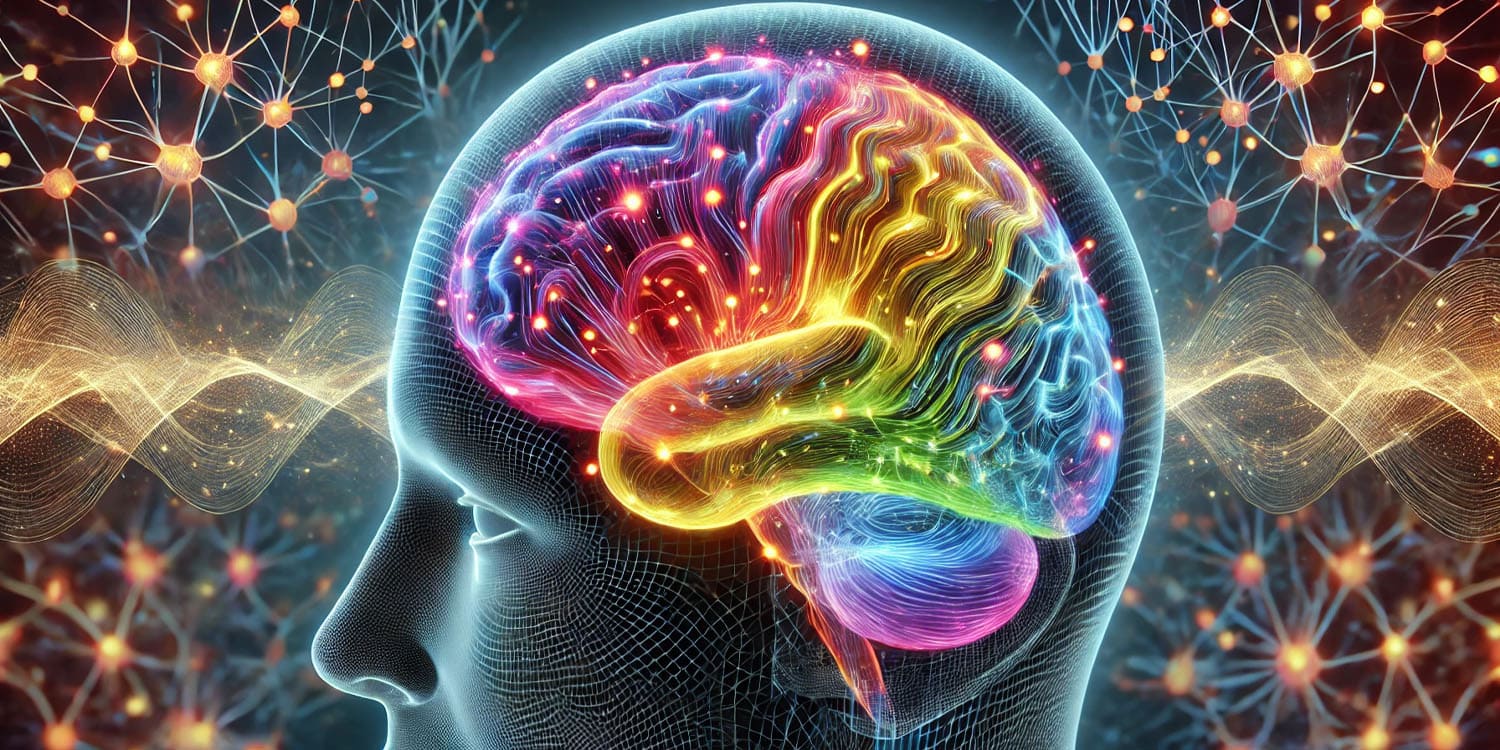A study published in Nature Neuroscience suggests that targeting specific brain circuits with non-invasive neurostimulation could offer new hope for treating post-traumatic stress disorder (PTSD) in veterans. Researchers found that veterans with brain injuries affecting connections to the amygdala were less likely to develop PTSD. Moreover, reductions in functional connectivity within this circuit following transcranial magnetic stimulation were linked to improvements in symptoms. These findings highlight the potential of non-invasive brain stimulation therapies as an effective treatment option for PTSD.
PTSD is a mental health condition that can affect individuals after they have experienced or witnessed traumatic events, such as combat. Veterans, especially those who have been in war zones, are at a high risk of developing PTSD, with estimates suggesting that up to 30% of trauma survivors may be affected.
Unfortunately, the current treatments for PTSD—medications and psychotherapy—are only modestly effective. Many patients continue to experience debilitating symptoms like anxiety, flashbacks, depression, and substance use disorders, which often lead to a significant reduction in their quality of life. Because of these limitations, researchers have turned to brain stimulation therapies as a possible alternative.
Brain stimulation therapies, such as transcranial magnetic stimulation (TMS), have been successfully used to treat other mental health disorders like depression. However, depression and PTSD involve different brain circuits, and applying the same stimulation methods for PTSD has not always been effective.
In some cases, depression-focused TMS treatments have even worsened PTSD symptoms. To address this issue, the research team sought to identify brain circuits that are specifically involved in PTSD, with the goal of finding more appropriate targets for neurostimulation therapies.
“As a psychiatrist, I have treated many patients with PTSD who just weren’t getting enough benefit from our standard psychotherapies and medications,” said study author Shan Siddiqi, an assistant professor at Harvard Medical School and neuropsychiatrist at the Center for Brain Circuit Therapeutics at Brigham & Women’s Hospital.
“For some disorders, such as depression, it’s been incredibly satisfying over the last few years to see new brain stimulation treatments that can completely change a patient’s life with as little as a week of treatment. In prior studies, we have tried to reverse engineer those successful depression treatments to develop a model for how to apply it to other disorders. In the present study, we applied that model to PTSD in an effort to help these patients who have been struggling with standard treatments.”
The research team focused on data from the Vietnam Head Injury Study, which included 193 Vietnam War veterans who had experienced penetrating brain injuries. These veterans were followed over a period of 20 years to assess whether they developed PTSD after their injuries. The study used brain scans to map the locations of the injuries and evaluated whether those with brain damage in certain areas were more or less likely to develop PTSD.
The researchers concentrated on brain regions connected to the amygdala, as previous studies have shown that this region plays a key role in fear processing and PTSD. They also looked at how brain lesions in these veterans affected the functional connections between different parts of the brain, using a tool called the human connectome. This allowed them to trace which brain circuits were disrupted by the injuries and to see how these disruptions related to the likelihood of developing PTSD.
The researchers found that veterans who had brain damage in areas connected to the amygdala were less likely to develop PTSD. Specifically, the team identified a brain circuit that, when disrupted, appeared to reduce the probability of PTSD. This circuit involved not only the amygdala but also the medial prefrontal cortex, a region of the brain associated with emotion regulation and fear extinction (the process of overcoming fear responses).
“People with brain damage were actually less likely to get PTSD than those with injuries that didn’t affect the brain,” Siddiqi told PsyPost. “Of course, brain damage alone is not a viable treatment, so we tried to figure out how to mimic the beneficial effects while avoiding the harmful effects.”
To extend their findings beyond the group of veterans with brain injuries, the researchers also examined data from 180 veterans without brain lesions, some of whom had PTSD and some who did not. This allowed them to study the brain’s connectivity in individuals without physical brain damage and to see if similar patterns emerged. They also tested the effects of TMS, a non-invasive brain stimulation technique, on 20 veterans with PTSD. They wanted to determine if changes in the brain circuits they identified were associated with improvements in PTSD symptoms after receiving TMS.
When the researchers analyzed the brain connectivity of the veterans without brain lesions, they found that functional connectivity within this same circuit was associated with the presence or absence of PTSD. In other words, individuals whose brains showed stronger connections in this specific network were more likely to have PTSD, while those with weaker connections were less likely to have the disorder. This finding was consistent across both groups, suggesting that this brain circuit plays a key role in PTSD, whether or not the individual has a physical brain injury.
Further, in the group of veterans who received TMS, the researchers found that reducing the connectivity within this PTSD-related brain circuit led to improvements in PTSD symptoms. Veterans who showed a decrease in connectivity in this circuit after TMS treatment experienced greater reductions in their PTSD symptoms compared to those who received a placebo treatment.
The findings were supported by a case study of a patient with severe PTSD who received fMRI-guided TMS treatment directly targeting this brain circuit. After just a few sessions, the patient experienced a rapid and significant reduction in symptoms, demonstrating the potential for this type of treatment to be both effective and fast-acting.
“Like many other mental illnesses, PTSD is a real brain disease that is driven by measurable changes in specific brain circuits,” Siddiqi said. “People suffering from this disease often fear that they’ll be judged for it, since they may have heard from others that mental illness is somehow related to the strength of your moral character. By finding where it lives in the brain, we can implicitly prove it is a physical condition — it’s just as real as a stroke or a brain tumor. And perhaps most importantly, we have new treatments that might provide some hope for patients (and clinicians) who may be frustrated with the old ones.”
Although this study provides evidence for the role of specific brain circuits in PTSD and the potential for neurostimulation therapies to target these circuits, there are some limitations. First, the research focused only on veterans, raising questions about whether the same brain circuits are involved in PTSD in non-veteran populations or individuals exposed to different types of trauma.
Future research will need to confirm these results in larger and more diverse populations and further refine the targeting of brain circuits for PTSD treatment. One important next step is to conduct clinical trials to test the effectiveness of TMS and other brain stimulation therapies on PTSD patients. Another avenue for future research is to explore whether stimulating these brain circuits immediately after a traumatic event could prevent the development of PTSD altogether.
“This is a new treatment target, but before we really know if it works, we need to test it in clinical trials,” Siddiqi said.
The researchers hope that their findings will lead to more personalized and effective treatments for PTSD, helping patients who have not responded to traditional therapies. They also plan to investigate whether similar brain circuits are involved in other mental health conditions and whether this approach could be expanded to treat a range of disorders. Ultimately, the goal is to improve the quality of life for individuals with PTSD by providing faster and more targeted treatment options.
“We hope to (1) test it in clinical trials to get it into the real world, (2) optimize the right target for the right patient at the right time, (3) expand it to other disorders, and (4) figure out if we can use this to prevent PTSD before it starts (for instance, if we treat people immediately after major trauma),” Siddiqi explained.
“This was part of a data sharing collaboration with many scientists around the country, including Jordan Grafman at Northwestern, Raj Morey at Duke, and Noah Philip at Brown.”
The study, “A potential target for noninvasive neuromodulation of PTSD symptoms derived from focal brain lesions in veterans,” was authored by Shan H. Siddiqi, Noah S. Philip, Stephan T. Palm, David M. Carreon, Amanda R. Arulpragasam, Jennifer Barredo, Heather Bouchard, Michael A. Ferguson, Jordan H. Grafman, Rajendra A. Morey, and Michael D. Fox.




